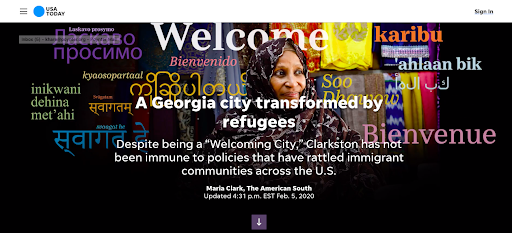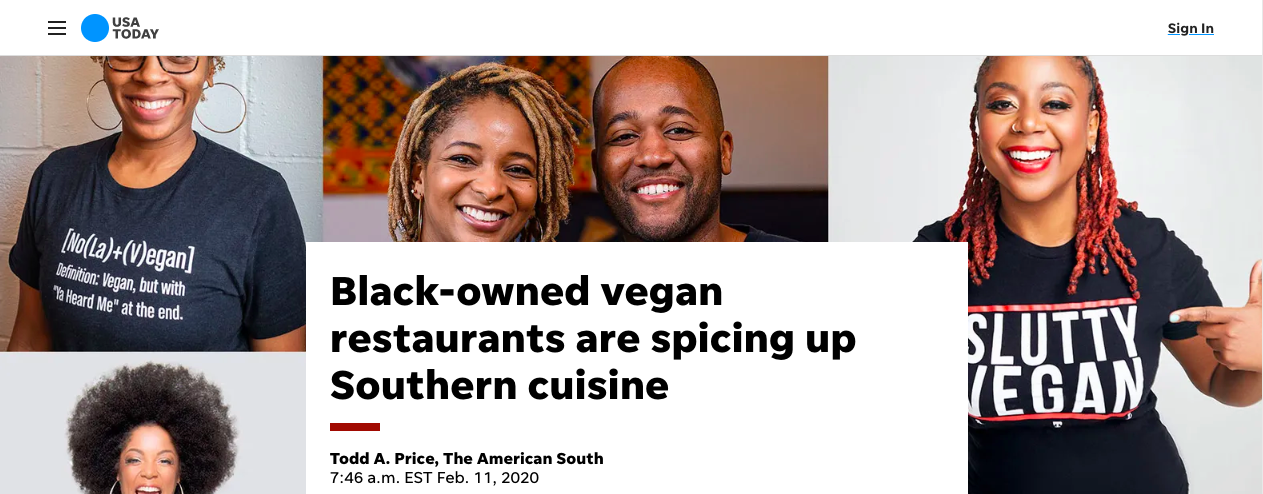What stories do you expect to read about the South?
Those are likely not the stories this new project from Gannett will be telling.
“We’re looking for stories that somehow illuminate the region,” said food and culture reporter Todd Price.
So not “Southern food is comfort food,” but “Black owned vegan restaurants are spicing up Southern cuisine.”
Not “People are still dirt track racing,” but “How old school buses kept Alabama town’s racing legacy alive.”
And not “Southern people are neighborly,” but “A Georgia city transformed by refugees.”
[the_ad id=”667826″]
The American South has also published stories about Haiti’s influence on the food of New Orleans, the challenges black women with HIV face in getting treatment and a history of the Sazerac cocktail.
It’s complex, like the region itself.
RELATED: How the food team at the Times-Picayune transformed itself
“Louisiana is nothing like Mississippi,” said Price, who’s spent most of the last 16 years writing about food in New Orleans, most recently at the New Orleans Times-Picayune. “Mississippi is nothing like Tennessee.”
The American South started officially publishing at the end of January on USA Today and the sites of 14 southern Gannett newspapers.

The team of four includes senior editor Ashley Hopkinson; food and culture writer Price; health and immigration reporter Maria Clark; and general assignment features reporter Andrew Yawn.
Hopkinson is based in Lafayette, the reporters are based in New Orleans, but their beat is the South.
And by the South, “we mean Louisiana, we mean Mississippi, we mean Alabama, Georgia, the Carolinas, and Tennessee,” said Hopkinson, who joined the project and returned to the South from EdSource in California.
RELATED TRAINING: Leadership Academy for Diversity in Digital Media
The project came from a strategy session where editors were asked what they’d create if there were no constraints, said Katrice Hardy, executive editor of The Greenville (South Carolina) News and USA Today Network’s Southern regional editor. The plan grew and was refined through the University of North Carolina’s Table Stakes program, Hopkinson said.
[the_ad id=”667872″]
For awhile, it was just called “the Southern vertical” internally, but as they tested names, the team was looking for something that fit the project’s mission – to tell new and compelling stories about the changing South. Those stories couldn’t just be one-dimensional or mere celebrations, either, Hopkinson said, but needed to examine race, faith, healthcare, the economy, education, politics and policy.
“I think we also know that the South has vast news deserts,” Price said. “It’s certainly important for us to look beyond the areas where we have publications and to try to fill in some of those areas.”

The American South isn’t alone in covering the region. There’s Scalawag, the Bitter Southerner, Southerly, plus local TV, print, online, radio coverage and more.
“There’s so many stories to tell and there’s still not enough people out telling them,” Price said.
Geographic identity is a theme at other Gannett newspapers, including the Milwaukee (Wisconsin) Journal Sentinel’s Be Wisconsin and the (Nashville) Tennessean’s Country Mile. And al.com from Advance Local created the social brand Reckon.
The American South also uses archives and work from other USA Today Network southern newsrooms, and it will expand again once Gannett fully merges with GateHouse.
[the_ad id=”667878″]
The team will tell stories about food, music and culture, “but then we’re not shying away from our history and the inadequacies in some of our systems,” Hopkinson said.
“‘Southern Living’ is a wonderful example of what’s special,” Hardy added, “but that’s not what this is.”
Editor’s note: This story has been updated to include another publication covering the South, Southerly.
Kristen Hare covers the transformation of local news for Poynter.org and writes a weekly newsletter on the transformation of local news. Want to be part of the conversation? You can subscribe here. Kristen can be reached at khare@poynter.org or on Twitter at @kristenhare.







